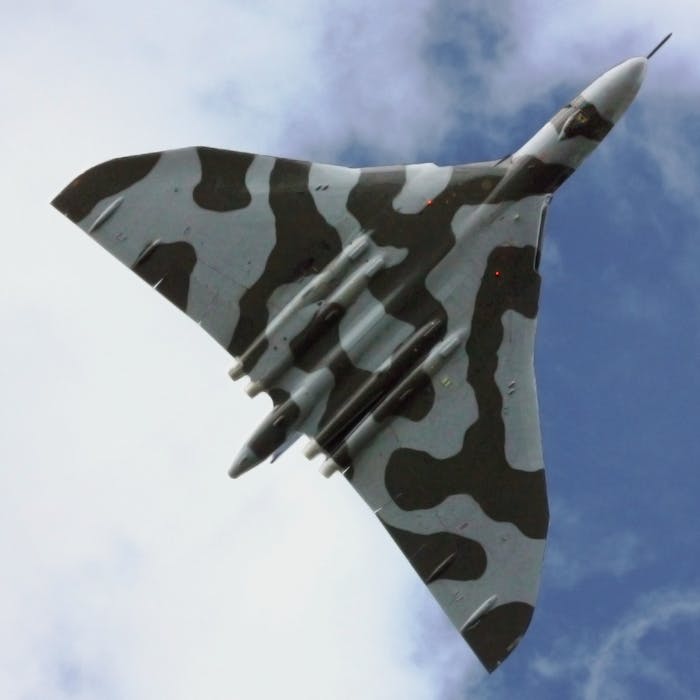
The V Bombers - Britain's Cold War nuclear strike force
The "V bombers" were the Royal Air Force trio of aircraft types that, during the 1950s and 1960s, provided the United Kingdom's strategic 'nuclear deterrent' strike force, known officially as the V force or Bomber Command Main Force.
The aircraft, whose names all started with the letter "V", were the Vickers Valiant (first flew 1951, entered service 1955), Avro Vulcan (first flew 1952, in service 1956) and Handley Page Victor (first flew 1952, in service 1958). The V-Bomber force reached its peak in June 1964, with 50 Valiants, 70 Vulcans and 39 Victors in service.
The planes were developed in response to an Air Ministry specification put out at the end of the 1940's for a strike force to serve Britain during the evolving Cold War that followed the creation of the so-called Iron Curtain, behind which lay the Soviet Union and its satellite states. Handley Page and Avro came up with very advanced designs for the bomber competition, which led to production of the iconic crescent-wing Victor and delta-wing Vulcan respectively, as the Air Staff decided to award contracts to both companies as insurance against one of the designs being a failure. Work on the Victor began in November 1947 and the Vulcan in January 1948. As a further insurance measure against both radical designs failing, the Air Ministry also commissioned a more conservative design from Vickers-Armstrongs, later named Valiant.
The Valiant actually went into service as the first V-bomber in 1955, with the Vulcan following in 1956, and the Victor in 1958. Bases used included the first Valiant squadron at RAF Gaydon in Warwickshire, the first Vulcan squadron at RAF Waddington in Lincolnshire and the first operational Victor squadron at RAF Honington in Suffolk. A total of ten main bases were used, and there were always planes on standby round the clock to take to the air within a few minutes, with their own guards, including Alsatian dogs.
For long range operations, tanker variants for in-flight refuelling were developed. The planes originally flew at high altitude painted white, but when it became clear that Soviet missiles could successfully bring down high flying aircraft, the V bomber force changed to low-level attack methods and were camouflaged. The Valiant was unsuitable for low-level operations, and was therefore withdrawn from service.
British-built nuclear weapons were used, starting with the Blue Danube free-fall bomb, subsequently followed by more sophisticated warheads. The Blue Steel became Britain’s first nuclear missile launched from a V-bomber, though subsequently Britain was to depend on American-supplied nuclear weaponry. The airborne nuclear force was withdrawn in 1969 in favour of the Polaris submarine missile fleet.
During the Cuban missile crisis in 1962, bombers of the V-Force were brought to readiness on 15-minute notice with the aircraft armed and crews ready beside them.
The Avro Vulcan will actually perhaps be best remembered for its conventional long range bombing raids during the 1982 Falklands War.
Examples of the three planes are to be found in one place at the RAF Museum Cosford, Shropshire.
Further reading
Links to external websites are not maintained by Bite Sized Britain. They are provided to give users access to additional information. Bite Sized Britain is not responsible for the content of these external websites.
